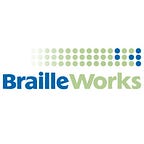Hope Beyond the Government Shutdown through Bipartisan Legislation
Just a little over a month ago both Republicans and Democrats of the House and Senate unanimously agreed not only to pass, but cosponsor, The Integrated Digital Experience Act, HR 5759 (21st Century IDEA). President Trump signed this bill into law on December 20, 2018. This show of unity should give us all hope.
What is the 21st Century IDEA?
The 21st Century IDEA pertains to public-facing websites and digital materials for all federal agencies. It is designed to reduce the use of paper by digitizing all forms and information. The intention is to streamline processes, create a better user experience, reduce costs, provide a secure system, and permit users to interact in a personal manner. The 21st Century IDEA also compliments Section 508 of the Rehabilitation Act, for Americans with Disabilities, by ensuring accessibility for people with disabilities.
The law is appropriately titled, as it will bring federal agencies into the 21st century. HR 5759 has all Americans in mind, including those with disabilities. It is related to Section 508 of the Rehabilitation Act, the requirements far exceed what Section 508 requires. It only requires equal access and does not include security, personalization, ease of use, or uniformity among all agencies.
How and When Will The 21st Century IDEA Be Implemented?
Agencies have 180 days from the signing of the Act to form a plan and get relevant sites up and running. Then, full implementation, uniformity, and integration are expected by December 2020.
The timeline is tight for federal agencies, but considerations could be given based on all agencies working together for implementation. The Chief Information Technology person of each agency will oversee the application, oversight, and interdepartmental communications.
The focus in the first year is to have all pertinent information in a digital and accessible format. The ease of use, cost to implement and maintain, and uniformity will also be worked on in the first year. The second year will focus on the interaction for the user, including a way for people to digitally sign documents and fill out forms. A two-year time period for complete implementation seems like a lofty goal. Representative Ratcliffe shares, the technology exists, “Why’s this such a big issue? Because it’s hurting our ability to ensure folks get timely and efficient help from agencies like the IRS or VA. Moreover, even though the technology we need to mitigate this problem is already available-we aren’t using it. However, as times change, and as citizens’ needs transform, it’s our job to ensure we evolve the services we provide.”
What Does This Mean Overall?
The result of The 21st Century IDEA will have all government forms digitized. The current Section 508 Standards of accessibility will apply, so these digital forms will need to be accessible to people with disabilities. These all seem like positive expected outcomes, but are they too good to be true? Time will tell as situations arise.
Cutting down on forms, paper, expense, and time is all well and good, but what about people who cannot access a computer? Will a non-digital format be available?
We do not know what will change over time, but we, at Braille Works, will keep you informed.
The 21st Century IDEA will be positive for many Americans, by providing streamlined, uniform, secure, and equal access across all agencies. These improvements will help people who have visual, cognitive, or neurological disabilities. The US Government is leading by example, and the route to accessibility will benefit all Americans. When you design a program with everyone in mind, you include everyone. We are hopeful that 2019 will be the year for Disability Rights and Accessibility.
How Did The 21st Century IDEA Come to Be?
Representative Ro Khanna (D) presented HR 5759 in the House on May 5, 2018. The bill was co-sponsored by Twelve Republicans and 7 Democrats in the US House of Representatives. On November 29, 2018, there was unanimous support in the House for the 21st Century IDEA.
Senator Perdue (R) presented it to the Senate, and after asking for unanimous support was granted, without changes, on December 11, 2018. Senator Rob Portman (R) was pleased with the passing of The 21st Century IDEA, “This bill will modernize the way the federal government delivers services online, increase efficiency, and reduce costs for taxpayers, and I’m pleased it passed the Senate unanimously.” Senator Portman introduced a similar piece of legislation in June of 2018.
In addition to the support of the executive and legislative branches, the following organizations and corporations also support the 21st Century IDEA: Information Technology Industry Council; The Software Alliance; Adobe; Information Technology and Innovation Foundation; Software & Information Industry Association; ServiceNow; CompTIA; and Microsoft.
In Their Words:
Representative Khanna (D)
“It’s time our government agencies adopt the innovative technologies of the 21st Century. Government exists to serve citizens, and this bill ensures government leverages available technology to provide the cohesive, user-friendly online service that people around this country expect and deserve.”
Representative Comer (R)
“I rise today in support of H.R. 5759 introduced by Congressman Khanna of California. The U.S. Federal Customer Experience Index measures citizen interactions with the Federal Government. The 2018 index gave Federal agencies failing scores. Citizens deserve and expect better from their government.”
Statement from the White House
“H.R. 5759, the “21st Century Integrated Digital Experience Act” or the “21st Century IDEA,” which requires executive agencies to comply with modernization requirements for new Federal websites and digital services, requires OMB to identify candidates for service digitization, and requires executive agencies to develop plans to accelerate the use of electronic signatures.”
Sources
- Senate Passes Portman’s 21st Century IDEA Act, Now Headed for President’s Signature
- 21st Century Integrated Digital Experience Act
- H.R.5759–21st Century Integrated Digital Experience Act
- Bill Announcement
This post was written by Christine Sket
Originally published at brailleworks.com on January 24, 2019.
